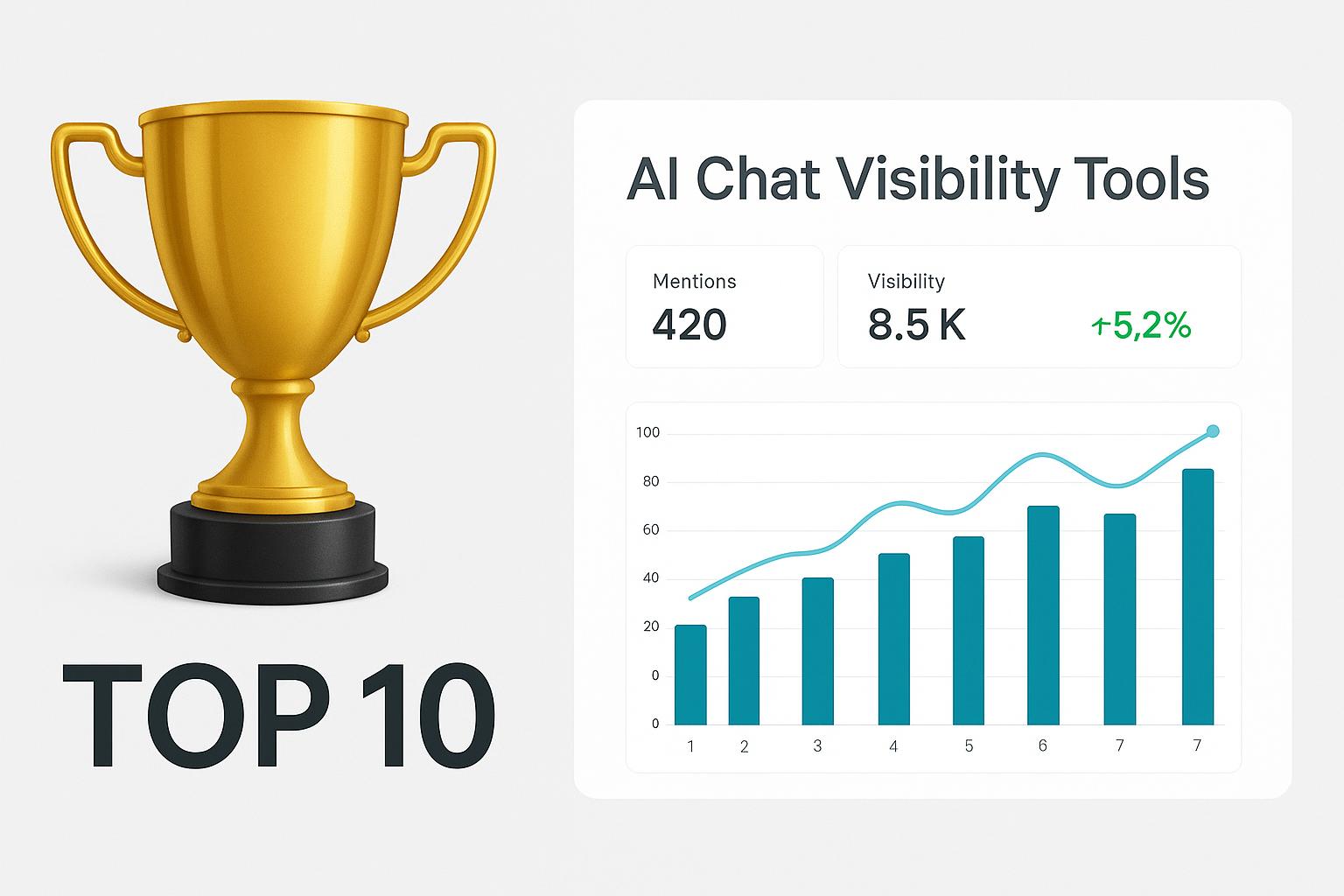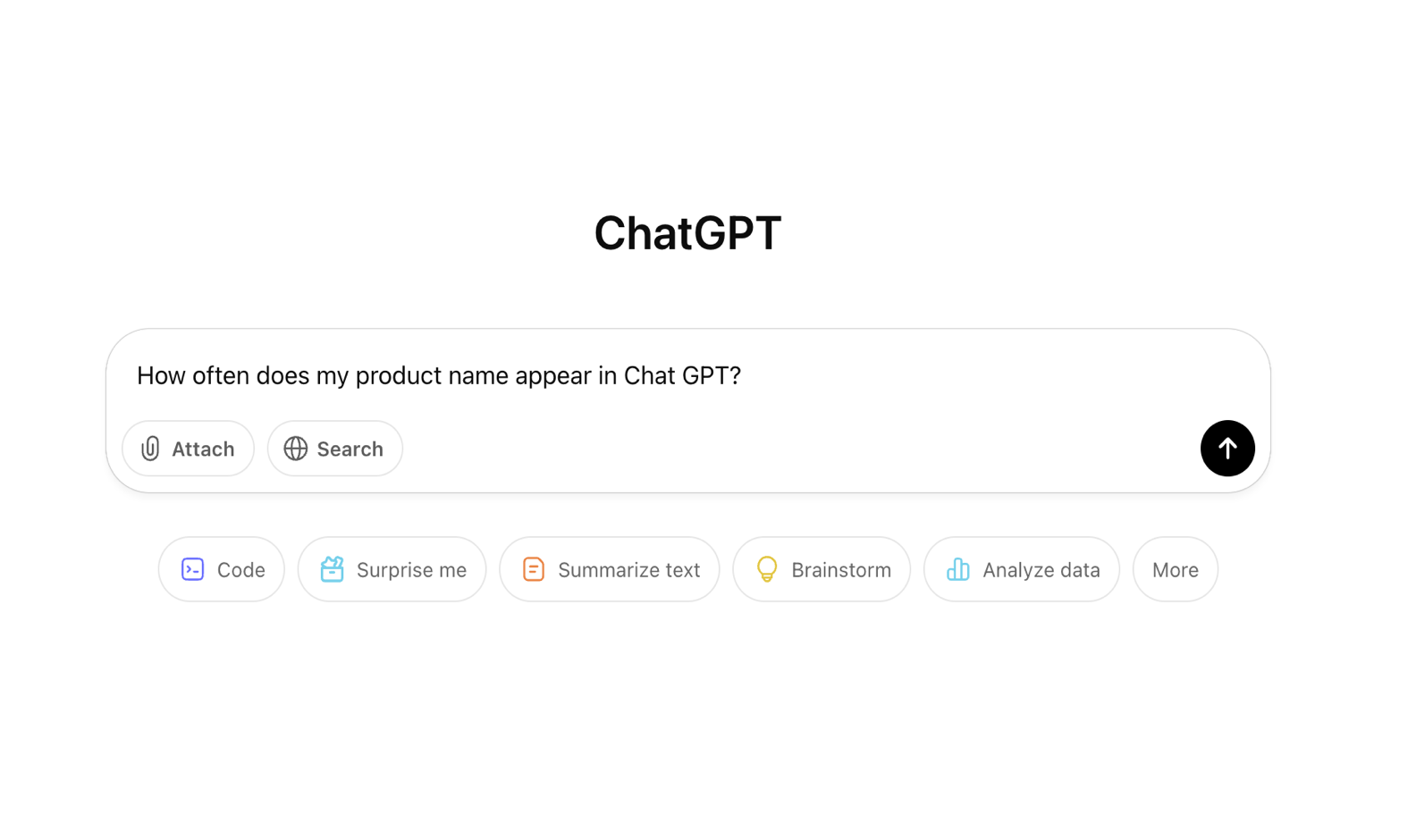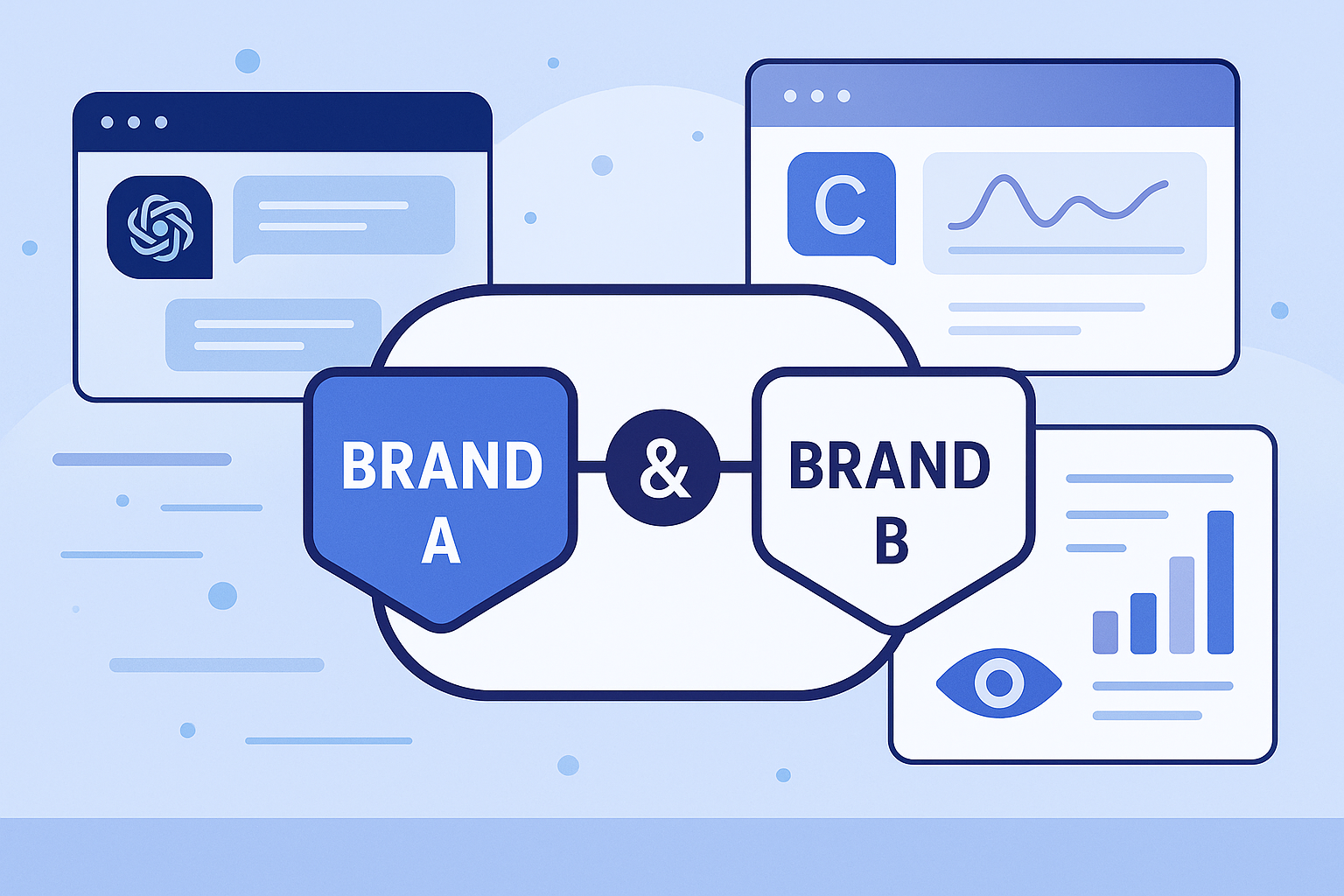
10 Best Tools for ChatGPT & Google AI Visibility (2025)
Struggling with AI search visibility? Discover the top 10 tools to optimize your content for ChatGPT, Google AI Overviews, and more.
RivalSee Team
12 min read
AEO
Discover if your content is being used by ChatGPT and other AI search tools. Learn how to track AI usage, optimize for visibility, and measure your content's performance in the new era of search.

In the rapidly evolving landscape of digital marketing, the rise of AI-powered search engines like ChatGPT, Google’s AI Overviews, and Perplexity has introduced a new layer of complexity. You’re creating high-quality, insightful content, but how do you know if it’s actually being seen and used by these influential AI models? It’s a critical question, and the answer is multifaceted, blending traditional SEO tactics with new, AI-focused strategies. This guide will walk you through exactly how to track your content’s usage by AI and optimize it for maximum visibility.
The reality is that direct, definitive tracking of every instance your content is used to inform an AI’s response is not yet possible. These models are often a “black box,” and for user privacy reasons, you can’t see the specific queries that led to your content being surfaced. However, a combination of referral traffic analysis, manual checks, and specialized tools can provide a clear picture of your AI search visibility. By understanding these methods, you can move beyond guesswork and start making data-driven decisions to enhance your presence in this new search paradigm.
This post will explore both the manual and automated techniques for tracking your content’s footprint in AI-generated answers. We will delve into how to leverage your existing analytics, what new tools can offer, and how to structure your content to be more appealing to AI crawlers.
In the age of AI-driven search, understanding your content’s visibility requires a shift in mindset. Instead of solely focusing on traditional rankings, we now need to consider mentions, citations, and overall sentiment within AI-generated responses. Here’s a comprehensive breakdown of how to track your content’s performance across platforms like ChatGPT, Claude, and Google’s AI Overviews.
One of the most direct ways to see if AI tools are driving traffic to your site is by examining your referral data. When a user clicks on a citation or link within an AI-generated answer, their visit is often tagged with a specific referral source.
Google Analytics 4 (GA4): You can create a custom report in GA4 to specifically filter for traffic coming from known AI platforms.
chatgpt\.com|perplexity\.ai|claude\.ai|gemini\.google\.com UTM Parameters: OpenAI has stated that traffic from ChatGPT will include the utm_source=chatgpt.com parameter. This makes it straightforward to track in your analytics. Keep an eye out for similar parameters from other AI tools as they become more standardized.
While it may seem rudimentary, manually querying AI search engines is an invaluable way to gauge your content’s visibility. This hands-on approach allows you to see firsthand how your brand and content are being represented.
Develop a Set of Core Prompts: Create a spreadsheet of key questions and phrases your target audience would use. These should include:
Regularly Test Across Platforms: On a consistent basis (e.g., weekly or monthly), run these prompts on major AI platforms like ChatGPT, Perplexity, and Google’s AI Overviews.
Document Your Findings: Record whether your content was mentioned, cited with a link, or if the sentiment was positive, neutral, or negative. This longitudinal data will reveal trends in your AI search visibility over time.
As the need to track AI visibility has grown, a new category of tools has emerged. These platforms are designed to automate the process of monitoring your brand’s presence in AI-generated answers. A tool like RivalSee is specifically built for this purpose, offering competitive intelligence for AI search.
With RivalSee, you can:
Other tools in the broader SEO and marketing intelligence space are also beginning to incorporate AI search tracking features.
Tracking your performance is only half the battle. To truly succeed, you need to create and structure your content in a way that is easily discoverable and digestible by AI models. Here are key optimization strategies:
AI models, much like traditional search engine crawlers, appreciate well-organized content.
The principles of E-A-T (now often referred to as E-E-A-T with the addition of “Experience”) are arguably even more critical for AI search.
AI models discover content through web crawlers, similar to traditional search engines. OpenAI has its own crawler, OAI-SearchBot. These models then process and synthesize the information they’ve gathered from numerous sources to generate answers to user prompts.
Yes, you can use your website’s robots.txt file to block AI crawlers. For example, to block OpenAI’s crawler, you would add:
User-agent: OAI-SearchBot
Disallow: /However, keep in mind that this will prevent your content from being surfaced in their search features, potentially reducing your visibility.
Generally, no. The best practices for AI search optimization—creating high-quality, well-structured, authoritative content—are also beneficial for traditional SEO. A good user experience is a good experience for AI crawlers as well.
For most businesses, a monthly check-in is a good starting point. If you are in a highly competitive niche or have recently launched a new content campaign, you may want to monitor your visibility on a weekly basis.
A mention is when an AI model names your brand or product in its response without providing a direct link. A citation includes a clickable link to your website as a source for the information provided. Citations are more valuable as they can directly drive traffic.
Currently, for privacy reasons, AI platforms do not share the specific user queries that trigger the use of your content. This is why a combination of referral analysis and manual prompting is necessary.
Schema markup, or structured data, can be very helpful. It provides AI models with additional context about your content, making it easier for them to understand and categorize. FAQ schema, How-to schema, and Product schema are particularly useful.
The rise of AI search represents a fundamental shift in how users find information. For digital marketing managers, simply creating great content is no longer enough. You must also ensure that it is visible and influential on platforms like ChatGPT and Google AI. By systematically tracking your content’s usage through a combination of analytics, manual auditing, and specialized tools like RivalSee, you can gain a crucial competitive advantage.
Optimizing for this new landscape requires a renewed focus on content structure, authoritativeness, and factual accuracy. By embracing these principles, you can not only improve your visibility in AI-generated answers but also enhance your overall SEO and provide a better experience for your audience. The future of search is here, and with the right strategies, you can ensure your brand is a prominent voice in the conversation.
Continue learning with these related insights.

Struggling with AI search visibility? Discover the top 10 tools to optimize your content for ChatGPT, Google AI Overviews, and more.
RivalSee Team
12 min read

Learn how to optimize your content for ChatGPT, Claude, and other AI search engines. Discover the strategies that get your site cited in AI-generated responses.
RivalSee Team
9 min read

Explore the top co-branded AI chat visibility tools for agencies. Learn how to monitor client mentions in generative AI and why co-branding is the new standard.
RivalSee
14 min read